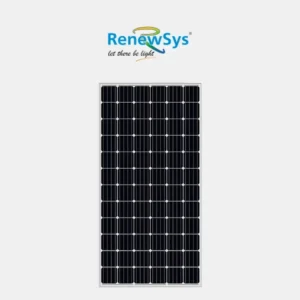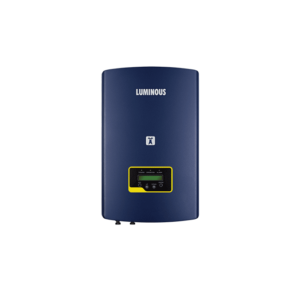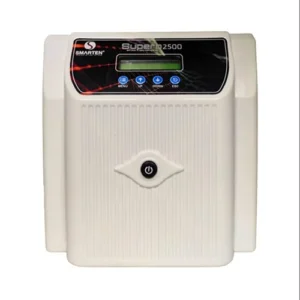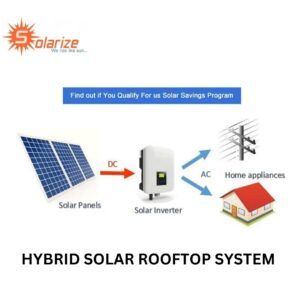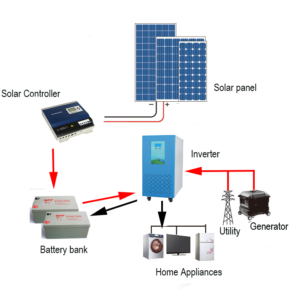Solar Rooftop System

Millions of residences and business structures in India’s cities and rural areas have rooftops that get plenty of daylight throughout the day. These are perfect for capturing solar energy and turning it into electrical power. Since most appliances and gadgets run on AC, this can be accomplished by installing an interface called an inverter to convert the DC electricity produced by the rooftop solar panels to AC power.
Types of solar Rooftop system:
There are three types of solar systems that can be considered.
1.on grid solar system
The on-grid system, which integrates the rooftop solar system with the main grid supply, is one of them. This technology only permits the usage of grid power when the rooftop solar system is unable to provide the necessary amount of power. Therefore, a properly designed rooftop system can effectively provide power without relying on the grid, saving costs associated with doing so. Actually, this technique can generate income just like any other.
2.off grid solar system
The rooftop solar system is not connected to the main grid in the second type of system, known as an off-grid system. With its own battery, this system may function alone. Numerous applications are powered by the battery, which is charged by the solar energy produced by the rooftop solar system. When the grid supply is unstable and frequently breaks down, or when there is no grid power at all, this approach is highly helpful.
3.hybrid solar system
The third is the hybrid system, which combines the functions of off-grid and on-grid systems. Although a battery is utilized in this kind of system, the benefit is that the surplus power produced is fed into the grid once the battery is fully charged, increasing the consumer’s income.
Feasibility of rooftops for generating power
The type of roof is crucial in determining the viability of house solar rooftop systems. The following elements must be taken into account:
Calculating the amount of power that can be produced requires knowledge of the rooftop’s area and the amount of sunshine that is available throughout the year. One hour of direct sunlight can generate roughly 290 watts of power for a typical residential solar panel. Eight hours of sunshine will allow the solar panel to generate 2320 watts of electricity.
The rooftop’s direction with respect to the sun is crucial. The best orientation for the panel is southward exposure. Installing rooftop solar panels is highly recommended if the roof faces south and slopes naturally. This is due to the fact that India is located in the northern hemisphere, and because the globe revolves on its own axis at an angle, rooftops facing south receive the most sunshine. Solar panels must be positioned at an angle, though, if the roof is flat.

